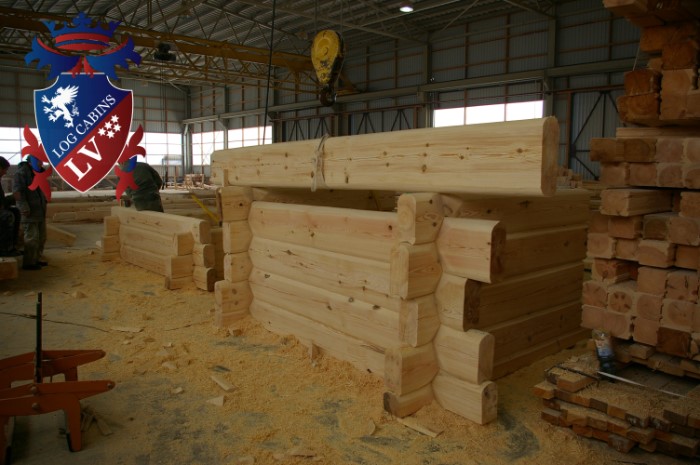The History Of Log Cabins
Archaeologists and historians who researched the development of architecture date log cabins back to the Bronze Age around 3500BC.
The Very First log cabins were built in Northern and Eastern Europe, Scandinavia, Russia, Ukraine and Germany where large amounts of woodlands were dominant, so the conditions were perfect for the constructing of rudimental log houses, log cabins.
The first written source is by the Roman architect Vitruvius Pollio describing the log dwellings-Houses-Cabins which were constructed by laying logs horizontally over the top of each other and filling the gaps-holes in with mud and wood chips.
Researchers believe that at first log buildings-cabins- houses were built using round logs, only later hand hewn log cabins emerged. This is the first improvement made in log cabins. And of course not the last!
For millennia hand hewn interlocking log cabins were the main type of houses in these areas where winters were extremely cold and well insulated cabins, houses were vitally important.
It is believed that interlocking log cabins – houses – buildings, where tree trunks were used and stacked one on top of another and overlapping the logs at the corners started in Eastern Europe and then spread to Scandinavia and the rest of the Europe in 11th century.
Over many centuries’ log cabins and interlocking log structures have developed immensely and have became bigger, stronger, and what started as a low roof hut has grown into a two story house and incredibly large barns.
The Fins made the greatest advantages in developing interlocking log techniques. They developed interlocking corners by notching the logs at the ends, resulting in strong structures that were easier to make weather-tight by inserting moss or other soft material into the joints.
Insulating properties of solid logs were big advantage over other building techniques, complex joints were developed to ensure more weather tight joints between the logs, but the profiles were still largely based on the round log technique .
By the time log cabins were taken to the new world Europeans had long tradition of using logs for buildings houses, barns and other buildings. Log cabins became trendy in Canada and northern part of US. This type of building became very popular among early settlers especially in northern parts of America where weather conditions during winter can be very , very harsh.
With suitable tools, a log cabin can be erected from scratch in days by a family. As no chemicals are involved, such as hardening of mortar, a log cabin can be erected in any weather or season.
Modern log cabins often are sold as prefabricated kits machined in a factory rather than hand-built in the field like of bygone days. Modern approach to building interlocking log cabins allows to build more structurally stable buildings without sacrificing architectural creativity. Techniques like twin skin log interlocking building made log cabins even more insulated and customisable.
At Log Cabins LV you will find massive range of log cabins and timber buildings. From modern built traditional looking round log houses or machine sawn garden log cabins to very contemporary glulam log cabins and timber buildings.

